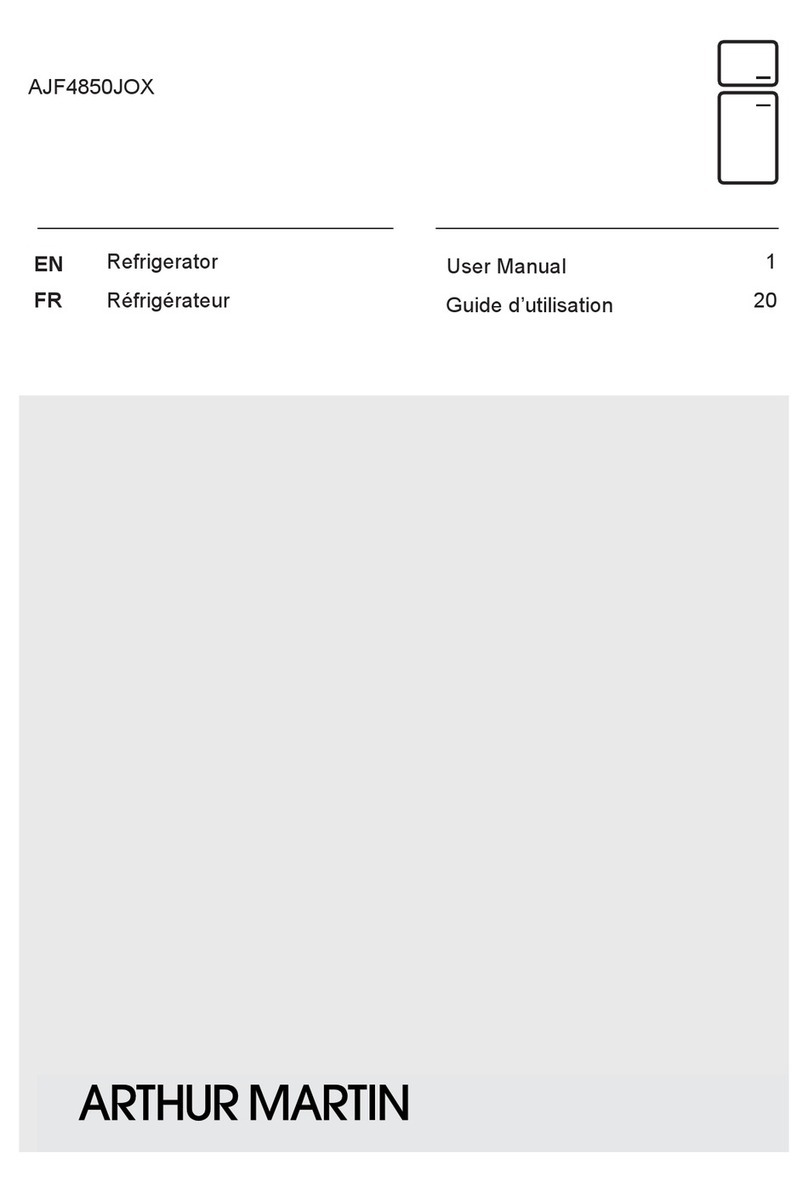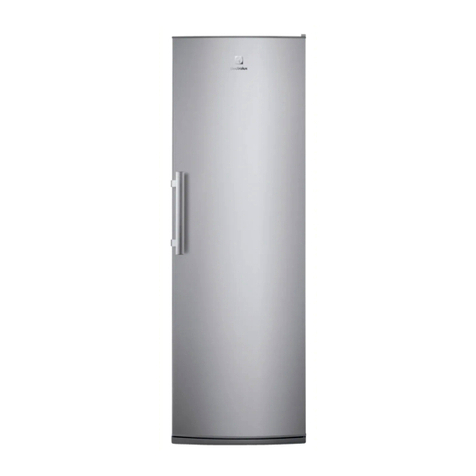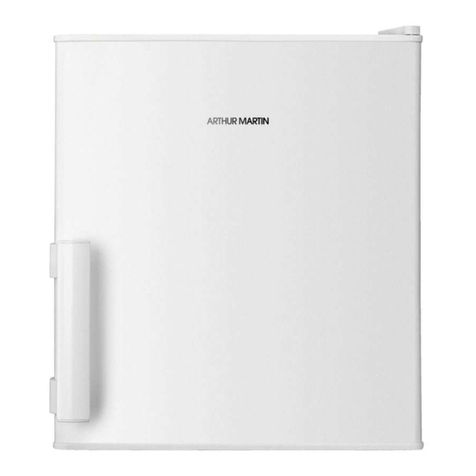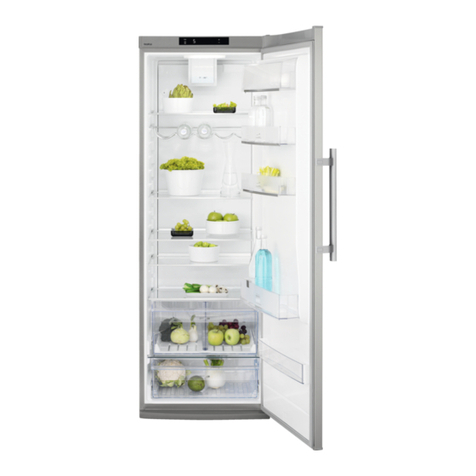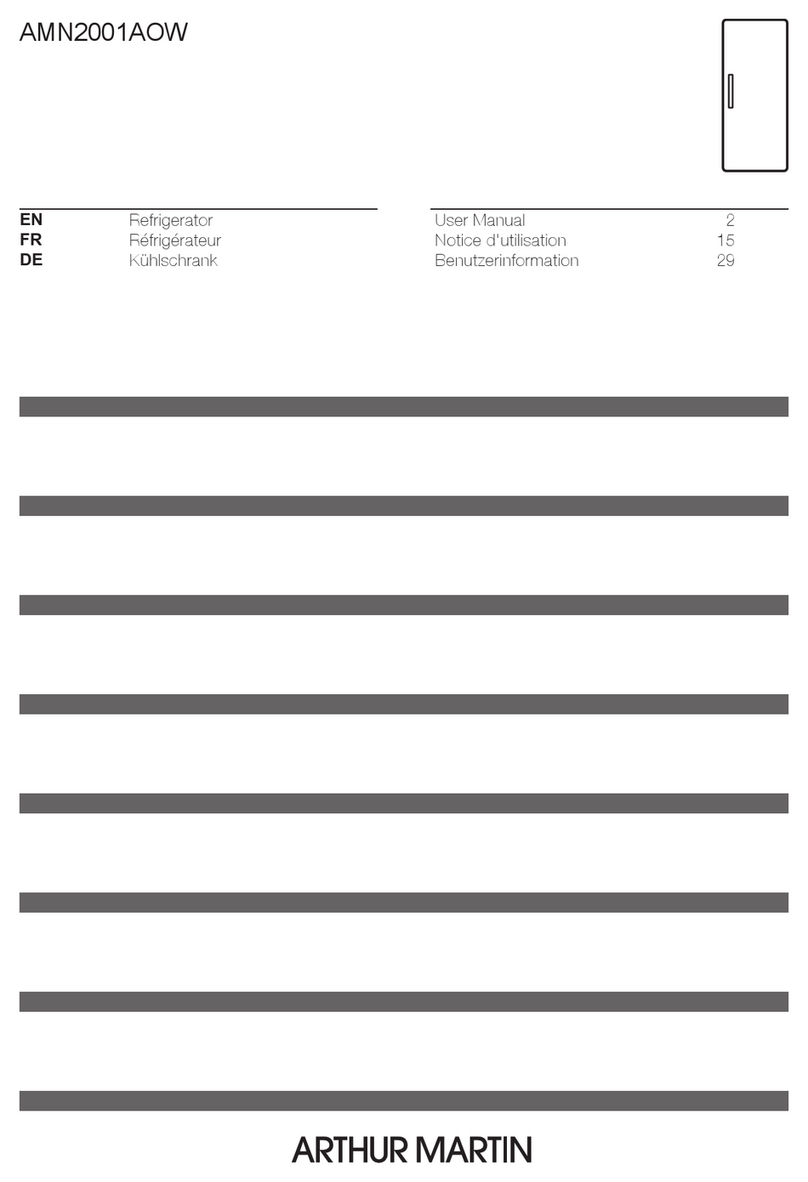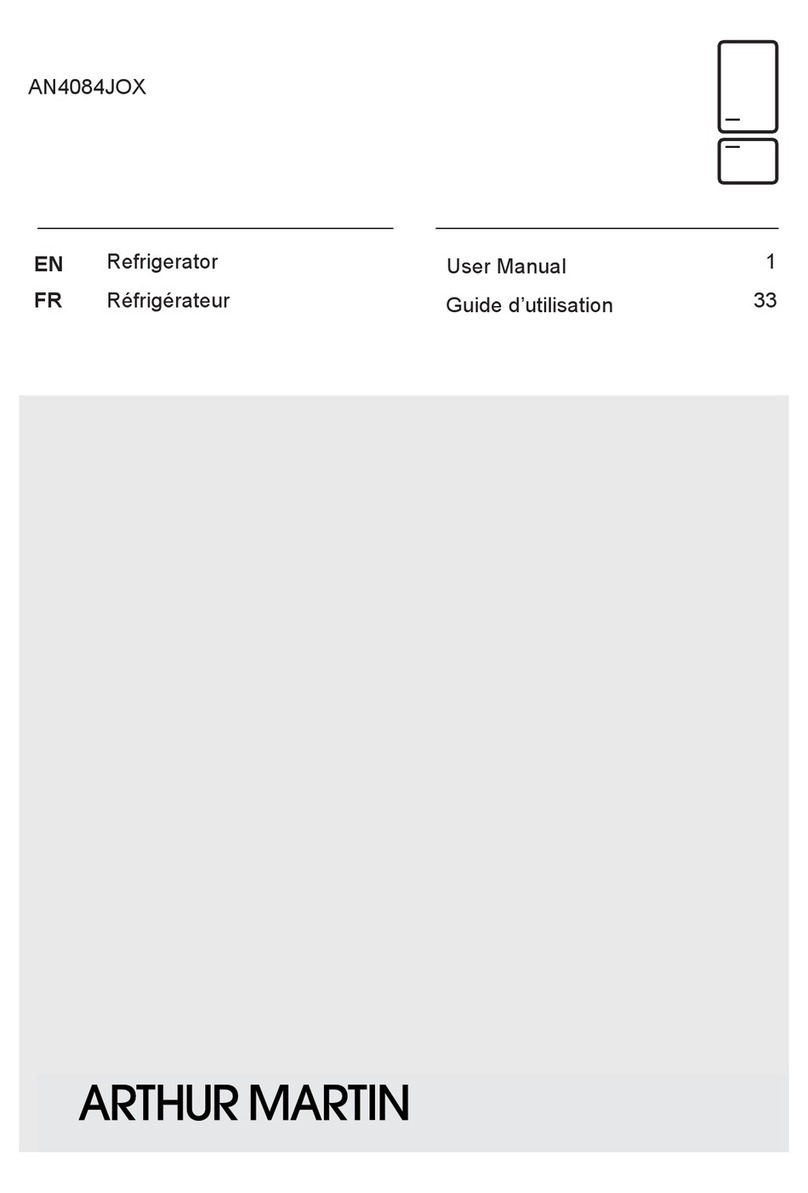
EN - 7 -
CLIMATE WINTER SPRING / AUTUMN SUMMER
10oC < Tamb < 16oC16oC < Tamb < 25oC25oC < Tamb < 43oC
Remarks
Freezer
Thermostat
Cooler
Thermostat
Ambient
temperateure
Set to appropriate position
between MIN and 2.
Positions 2.5 and 3 would
be enough according to
your refrigerator model.
Set to appropriate position
between 2 and 3.
Positions 2.5 and 3 would
be enough according to
your refrigerator model.
Set to appropriate position
between 3 and MAX.
Positions 2.5 and 3 would
be enough according to
your refrigerator model.
If your refrigerator is in an
extremely cold place with
an ambient temperature
under 10oC, and if you think
the fridge compartment is
cold with the fridge ther-
mostat set to minimum, you
can set freezer thermostat
to lower positions.
With ambient temperatures
over 38oC, if your fridge
compartment is not cool
enough as you want, you
can set freezer thermostat
to higher positions.
Default positions values of your refrigerator are 2.5-3 for freezer compartment
thermostat, and 3 for fridge compartment thermostat.
We advise you not to change your freezer thermostat positions except in the
above mentioned conditions. Your fridge compartment thermostat can be set ac-
cording to the ambient temperature as mentioned above.
The values mentioned in the table are recommended thermostat positions. These
values can change according to usage conditions.
Warnings about Temperature Adjustments
• We recommend that you do not operate your fridge in environments where the ambient
temperature is below 10°C because this will reduce its efficiency.
• Temperature adjustments should be made according to the frequency of door openings
and the quantity of food kept inside the fridge.
• Do not start another adjustment before completing one adjustment.
• When you first switch on the appliance, allow it to operate for 24 hours continuously
to cool down to the correct temperature. During this initial 24 hour period do not open
the door or place a lot of food inside the appliance.
• If the appliance is switched off or unplugged, wait at least 5 minutes before plugging
the appliance in or restarting it in order not to damage the compressor.
• Your fridge is designed to operate within specific
ambient temperature ranges, according to the
climate class stated on the information label. We
do not recommend operating your fridge outside
the stated temperatures value limits.
• This appliance is designed for use at an ambient temperature within the 10°C - 43°C
range.
Note that;
• The ambient temperature, temperature of the freshly stored food and how often the
door is opened affects the temperature in the refrigerator and freezer compartment.
If required, change the temperature setting.
• We recommend that you freeze fresh foods on the upper shelf and as far from the
thermostat as possible.
Climate Class Ambient
T16 to 43 °C
ST 16 to 38 °C
N16 to 32 °C
SN 10 to 32 °C
